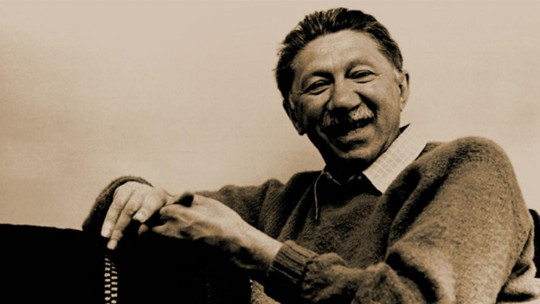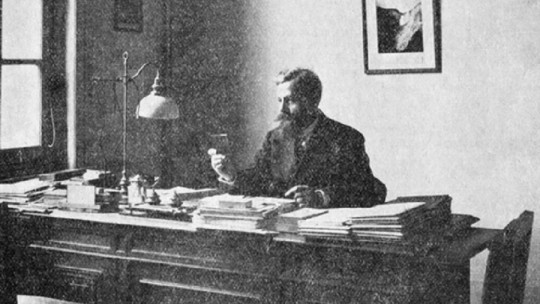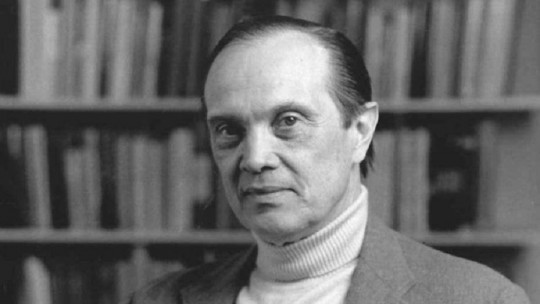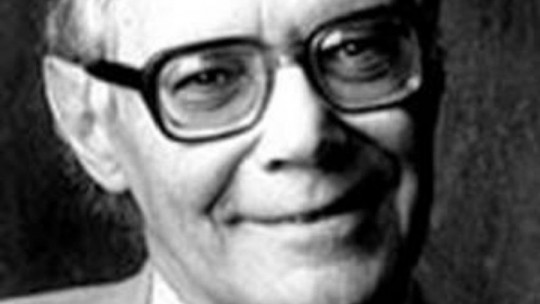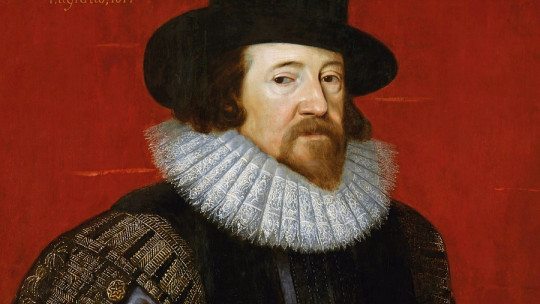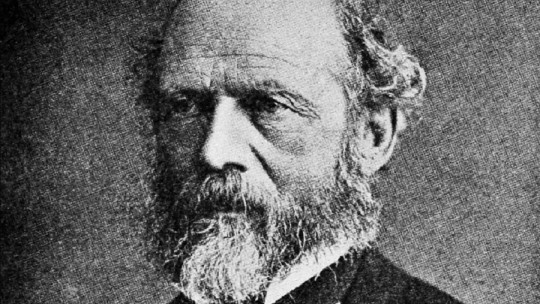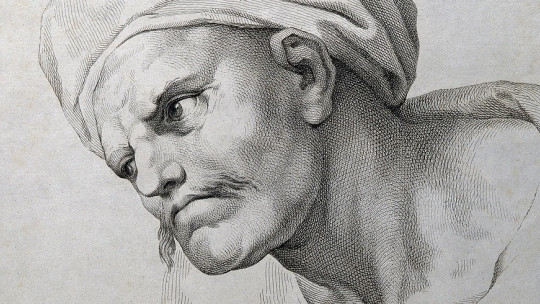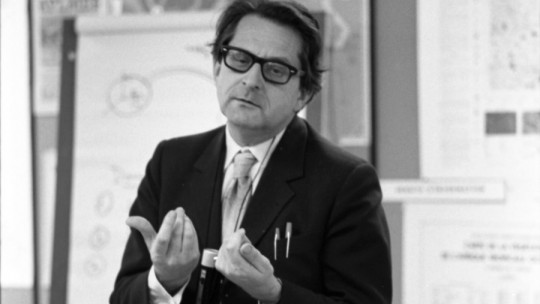
There are many personalities who, throughout their careers, have contributed to creating what is today an entire field of knowledge. This is the case of Abraham Moles.
Through this biography of Abraham Moles We are going to walk through the life of this author and thus better understand what his influence was in contributing to the advancement of information science as we know it today. Likewise, we will review some of his most relevant works.
Brief biography of Abraham Moles
Abraham Moles was born in the French city of Touzac, in the southwest of the country, in 1920. After completing primary and secondary education, he enrolled at the University of Grenoble to complete the necessary studies to become an electrical and acoustic engineer.
Once this training is completed, began working in a laboratory of the metal physics department, where he served as assistant to important professors, such as Félix Esclangon and Louis Néel. This work allowed him to acquire great skill in metallurgy, but also in other fields, such as the use of various electronic equipment and the preparation of analyzes and technical reports.
The global context, meanwhile, was nothing less than that of the Second World War, which devastated several European countries, including France. After this war, Abraham Moles was able to access the National Center for Scientific Research, or CNRS, by its French acronym.
It was not the only activity he carried out during this time. At the same time, he combined this work with continuity in his training, in this case in the field of philosophy. For this he returned to the University of Grenoble, where he was a student of Jacques Chevalier and Aimé Forest, among others.
But it was not the only institution where Abraham Moles learned philosophy, since At the University of Aix he was able to learn directly from Gaston Berger, and he even also attended the prestigious Sorbonne, to be able to attend Gaston Bachelard’s classes It was precisely at the Sorbonne where he achieved the highest academic degree, that of doctor, in 1952.
His doctoral thesis was titled, The physical structure of the musical and phonetic signal. This work was the beginning of a long career developing the field of information sciences. To develop the thesis he had the supervision of authors such as René Lucas, Alexandre Monnier, Henri Pieron, and Edmond Bauer.
Beginning of his career and second doctorate
Already as a doctor, Abraham Moles had the opportunity to collaborate at the university’s Center for Radio-Television Studies. This institution’s objective was to investigate these media. Inside the Study Center, Moles He worked together with Pierre Schaeffer, an engineer and composer, who had developed a musical style known as musique concrete
However, this job did not allow him great financial independence. For this reason, he tried to apply for scholarships from the Rockefeller Foundation, which were granted. Through this help, he was able to temporarily move to the music department at Columbia University in the United States, and thus learn from the composer Vladimir Ussachevsky.
Although Abraham Moles was already a doctor, he presented a new doctoral thesis at the Sorbonne, to achieve this distinction also with respect to the discipline of philosophy, which he had also studied His thesis was “Scientific Creation”, and he carried it out under the guidance of Gaston Bachelard, who had already been one of his professors several years ago at that same university. This is how Moles, in 1954, became a doctor twice, and on both occasions through one of the most prestigious universities, not only in France, but in all of Europe, such as the Sorbonne.
Continuation of his career
From that year on, Abraham Moles would be directing the Scherchen electroacoustic laboratory for almost five years, which is located in the Swiss municipality of Gravesano In this center he was able to collaborate with a personality from the world of music, none other than orchestra director, Hermann Carl Julius Scherchen, after whom the institution was named.
Scherchen was one of the first leaders of Radio Berlin until the early 1930s. During that period, he was the promoter of great European composers, among whom are names such as Luigi Nono, Iannis Xenakis, Luciano Berio and Bruno Wood.
But his work in this musical center was not the only activity carried out by Abraham Moles during this time. At the same time he acted as a teacher for different entities. First of all, at the University of Stuttgart, where He taught philosophy in the same department directed by the author Max Bense Likewise, he was a professor at the University of Utrecht, the University of Berlin and the University of Bonn.
But it was at a different institution where he achieved a permanent teaching position. It occurred at the Hochschule für Gestaltung, or design faculty, located in the city of Ulm. It was the architect and artist, Max Bill, who was in charge of creating this center, once the Second World War ended.
His life as a professor and Strasbourg School
Abraham Moles’ prestige was increasing, and he combined his position at that entity with a position as a professor at the University of Strasbourg. Here, had the opportunity to work alongside the sociologist Henri Lefebvre In Strasbourg, he began teaching sociology to eventually become a professor of social psychology.
In 1966, Abraham Moles established another of the great milestones of his career. And in that year, he founded the Institute of Social Psychology of Communications. This institution was also popularly known by the short name of Strasbourg School. This would be his work center for the next two decades.
The Strasbourg School was a training center for professionals in the communication sciences Many of Abraham Moles’ students also ended up becoming teachers and were thus able to continue transmitting their teacher’s knowledge to new generations.
Many of these people were part of the International Association of Micro Psychology and Social Psychology of Communications, an important entity that served as a link for authors versed in this field.
Another of the positions held by Abraham Moles, already converted into an eminence, He was president of the French Cybernetics Society, an institution that had been created by the mathematician, Louis Couffignal. Likewise, Abraham Moles received an honorary invitation to join the famous creative literature club known as the Oulipo, in 1970.
During the years to come, Abraham Moles did not stop publishing new works, increasingly contributing to expanding the field of information sciences. His death would come in 1992, in the city of Strasbourg itself, where he had resided during the last decades of his life.
Main contributions
After having made a compendium of the main stages of the biography of Abraham Moles, it is time to focus on some of the most important contributions that this author made regarding communication processes, especially in mass media.
To this end, he made clear the enormous relevance that auditory, visual and graphic information had in delivering a message to large numbers of people at the same time, which made radio and television media the main communication channels. communication during that time.
For Abraham Moles, Communication was a process of dynamic interaction between individuals, in which a series of basic elements were transmitted and combined successively, creating an increasingly complex message In this reasoning the influence of the Gestalt school can be seen. But he also collected theories from other schools of psychology.
Moles stated that The communicative process occurred in two different ways, one being a short cycle and the other being a long cycle The short cycle refers to specific messages that are launched by the media towards the population, through people who are experts in this task. In that sense, professionals would select the information to transmit and send it to citizens.
The long cycle would refer, on the contrary, to the process that takes place before a certain phenomenon has acquired sufficient relevance to have been captured by observers and therefore chosen to be transmitted through the mass media.
According to Abraham Moles, these were the two fundamental processes that must be taken into account to study communicative processes in depth. Therefore, this theory represents one of his great contributions to information sciences.

